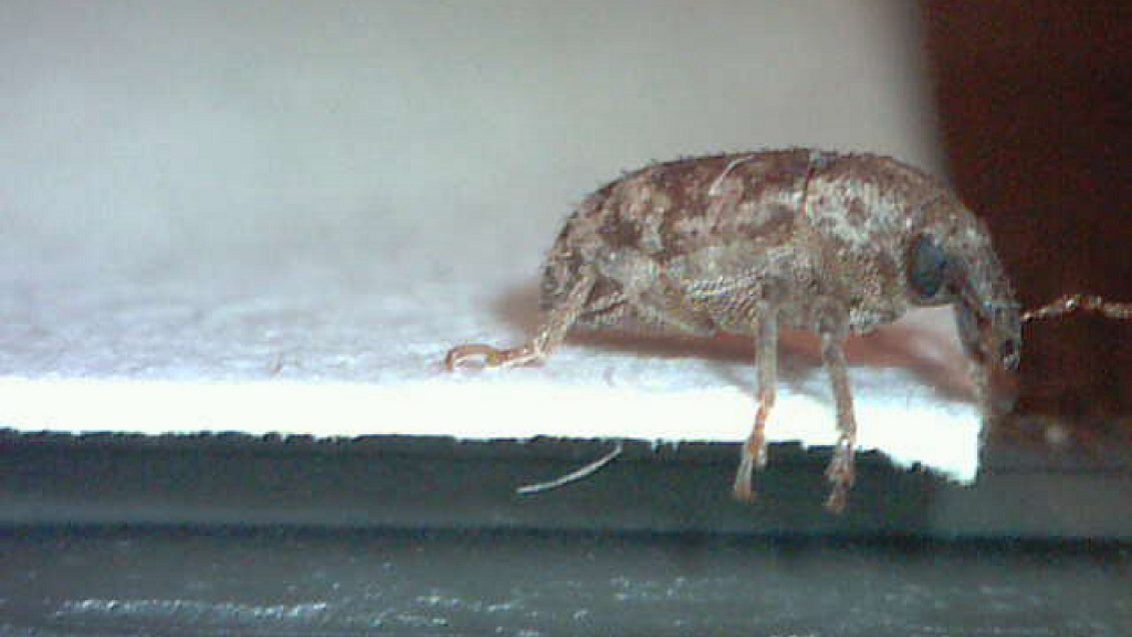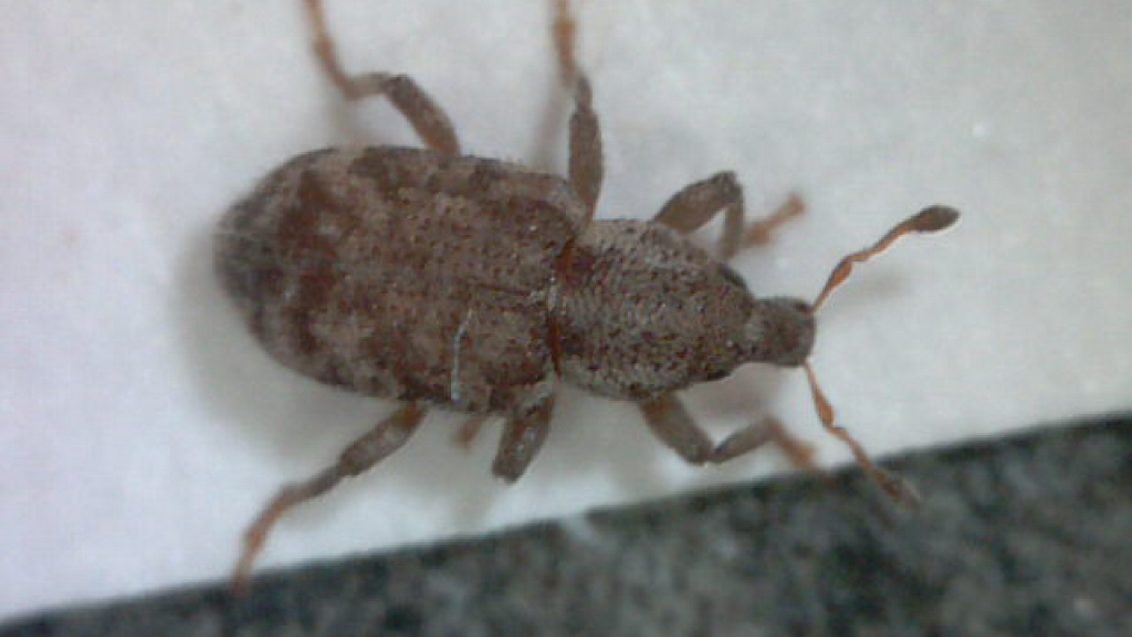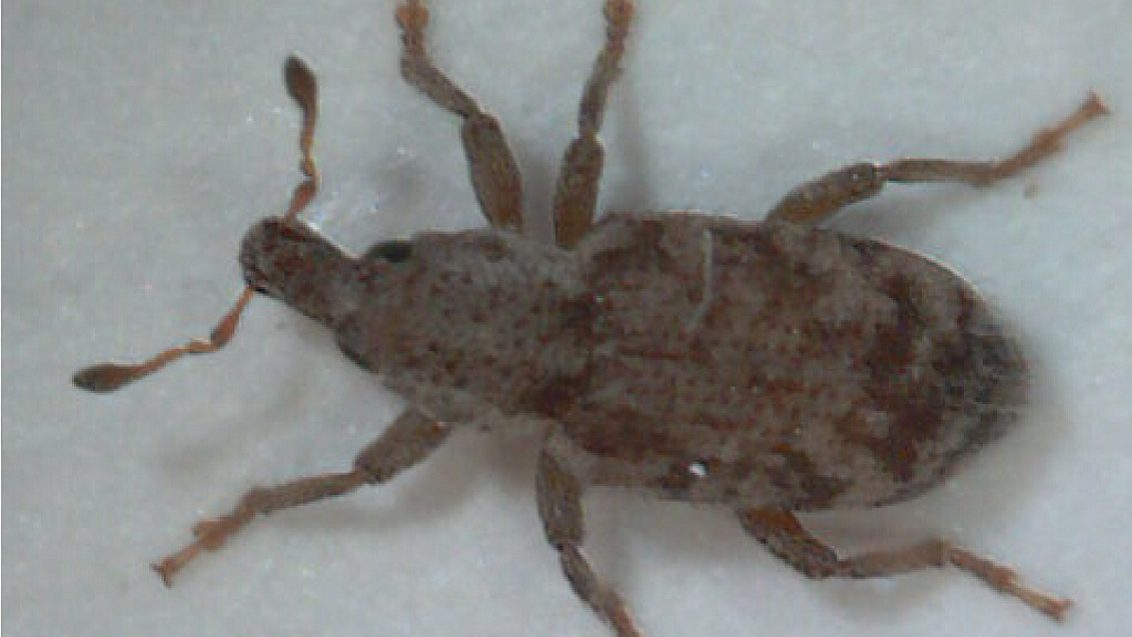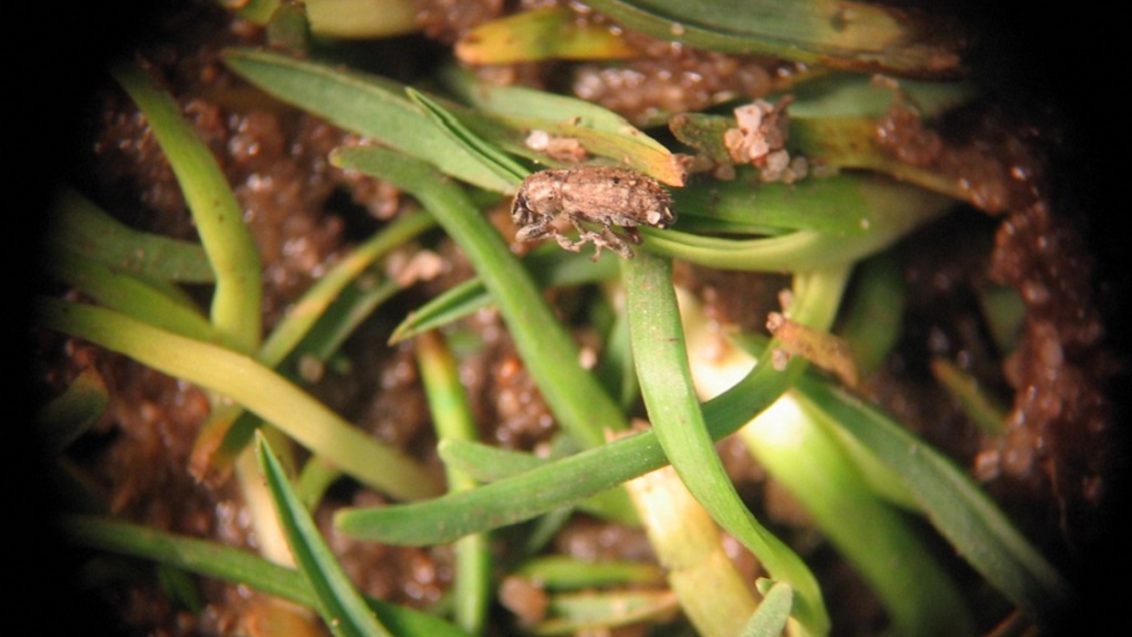Argentine Stem Weevil
Insect Pest
Identification
The immature/larval stage of the Argentine Stem Weevil is a legless, creamy-white, active larvae up to 4mm in length. When mature the adult appears as a dark grey to black weevil with mottled grey body markings and a distinctive protruding snout, up to 3mm in length.
Life Cycle
Populations of Argentine Stem Weevil will have 2-3 generations per year, with the second and third generation often overlapping resulting in a large population at various life stages. In the Sydney region there are 4 generations and can be up to 5 generations. Adult weevils emerge from overwintering sites between September and November but this can be as early as late July as overwintering adults become active when temperatures are consistently over 10°C. After mating the female weevil deposits several eggs under the leaf sheath of the host plant. Once the eggs hatch the larvae begin to feed inside the plant stem until they reach the second or third instar at which point the burrow out of the plant and drop to the ground. Once outside the plant the larva begins to feed at the base of the turf plant, ingesting plant material from the stems and crown. After the fifth instar is reached the larva pupates within the upper soil profile and the adult soon emerges. Adults then mate and lay the next generation of eggs, or over winter to resume the lifecycle the following season.
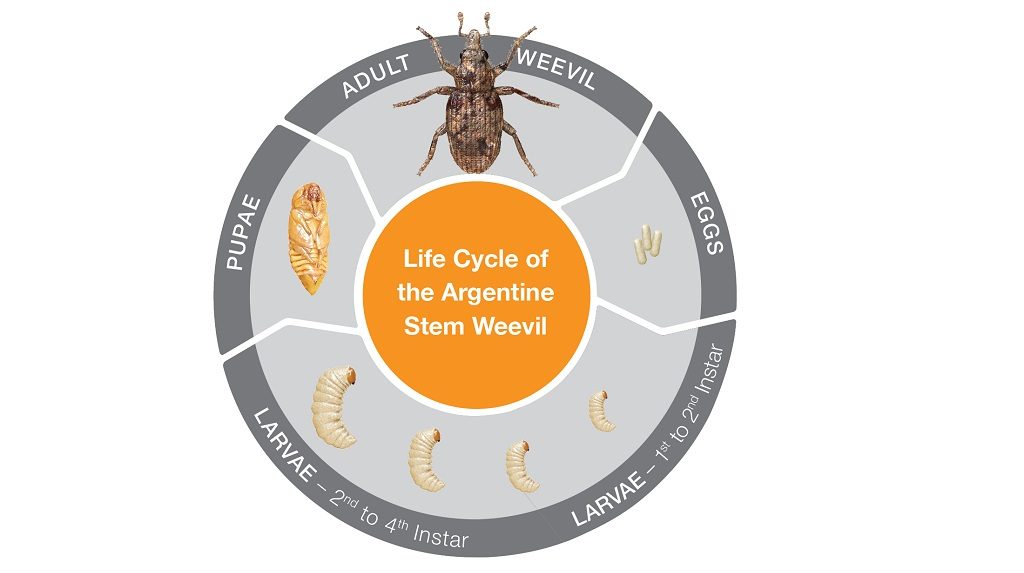
Symptoms
Damage typically occurs around November, and February when large numbers of later instar larvae are present. Damage can be found as early as October in NSW if conditions are warm.
The larvae initially feed within the plant stem following hatching, and then drop from the stem to feed at the plant base and crown. The feeding habits of the larvae make it the most damaging stage of the pest’s lifecycle.
Symptoms of damage initially occur as the plant begins to yellow when larvae are feeding within the stem. The injured turf plants then turn straw colour, exhibiting symptoms similar to drought stress or localised dry spot, particularly in golf greens.
Considerations
Early preventative treatment is paramount in successful season long control. If the initial generation is allowed to develop, subsequent generations will emerge and life stages will overlap creating a large, diverse population that is difficult to control.
Controls
PROVAUNT Turf Insecticide - targets and destroys both Larvae and Adult Stem Weevils. This new mode of action has led to new application techniques, with research demonstrating that best results are achieved when this product is not washed in. Applied at the low rate of 1.25 kg/ha. Available in 500g containers. WG (water dispersible granule) that dissolves easily when mixed with water.
ACELEPRYN Turf Insecticide - apply early season (mid-September) when overwintered adults are first observed, to prevent damage and population build up. Early application is essential to prevent grass damage due to feeding. Use the higher application rates when extended residual performance is required or for later season applications (mid-December onwards) or in cases of high pest pressure.
SPINNER Turf Insecticide - monitor adult activity through spring and early summer. Spray when peak numbers (preventatively) or when first visual symptoms are observed (curatively) typically around late September to December. Early application is essential to minimise damage to turf due to feeding.

